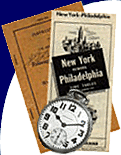

| home | articles | briefs | classifieds | flimsies | interchange |
 |
 |
||||||
|
|||||||
 |
RyPN Briefs February 13, 2007 previous brief ~ return to briefs index ~ next brief News from India A Feast for Steam Loco Lovers in India
The five heritage engines that ran were– Fairy Queen, XE-3634, War Class AWE22907 WL-15005 and WP-7200. "There is a craze among people right from kids to grownups to old people. The whistle also creates a flutter in the heart. It is associated with people's culture, history and education. It reminds everyone of the old times. It is a universal symbol of one's memories," said Rajesh Agarwal, the Executive Director of the National Rail Museum in New Delhi. Many passengers, including Railways Minister Lalu Prasad Yadav and members of his family, took a ride in the locos. The Fairy Queen, a Guinness record holder, is the oldest locomotive engine in working condition among the five "Black Beauties". Steam engines in India are not only considered historically important for the railways, but are also significant as symbols of the increasing awareness and attention being given to industrial history around the world. India's first steam engine, the Thomason, was built on December 22, 1851, and since then, hundreds of engines have traveled on the narrow gauge tracks that have been built specially for them. * * * * * * * * * * Matheran Light Railway On Tuesday, January 30th, the narrow gauge mini train took its first successful trial run all the way to Matheran. The line will be opened to passenger traffic in March. The tracks were washed away during the July floods in 2005. "The track had not been damaged, but an entire section had been washed away and we had to build the line all over again. There is no change in the distance or the new alignment, but we are confident of opening the line by March," S.C. Mudgerikar, CR's chief PRO said. Last December, the line was restored to Jummapatti, that is 5 km from Neral station. This is the first time since the flooding that the train has run to Matheran. And just in time for Matheran Railway's centenary year. The Matheran Railway has made it to the Unesco's tentative heritage list for India. In a letter dated December 15, 2005, director of Unesco World Heritage Centre Francesco Bandarin, states: "The Matheran Light Railway has been included in the tentative list for conservation." The railway board's heritage directorate is now pushing to make it to the list of Unesco's World Heritage Site. The railway track is about 19.97 km long and has a gauge of only two feet. The construction of the line, built by Abdul Hussain Peerbhoy, began in 1904 was opened to traffic on March 22, 1907. Justifying that the rail line is of outstanding universal value — one of the criteria for nomination — an official said: "The Matheran Light Railway is one of the best preserved heritage railways in India. Such railways are rare and it deserves conservation and global recognition of its qualities." |
|||
Copyright © 1998 thru 2025, all rights reserved, contents may not be used without permission. |